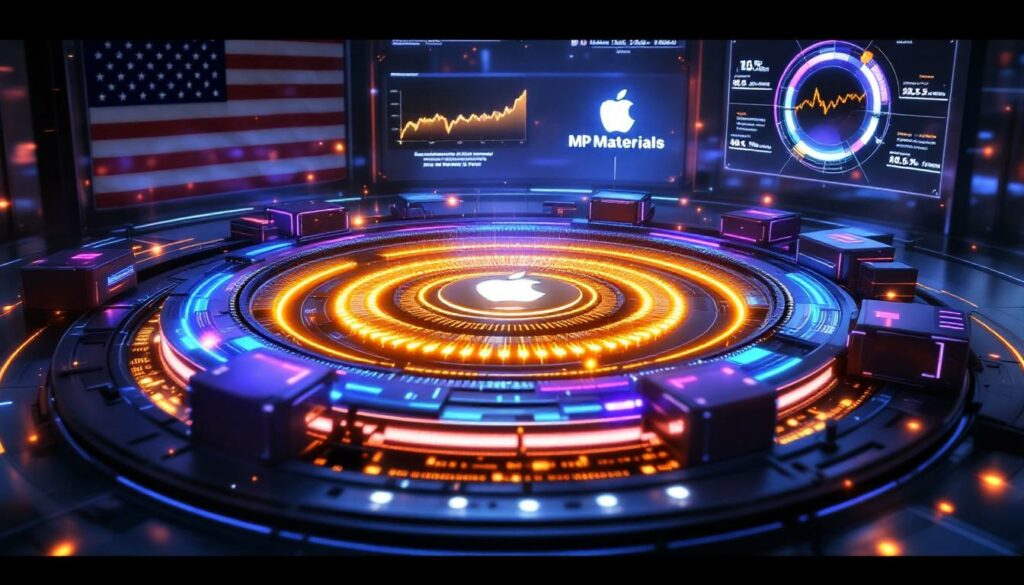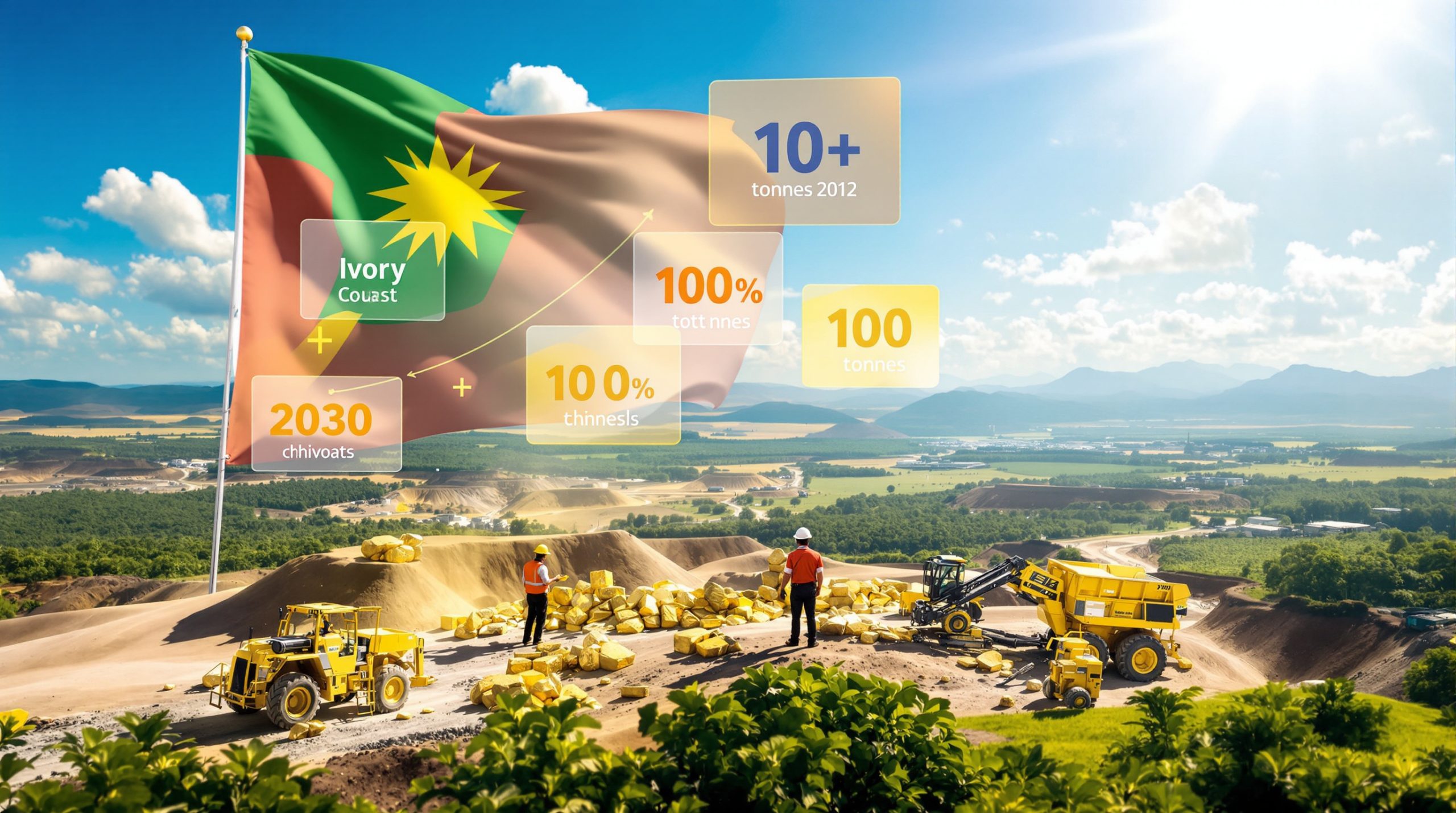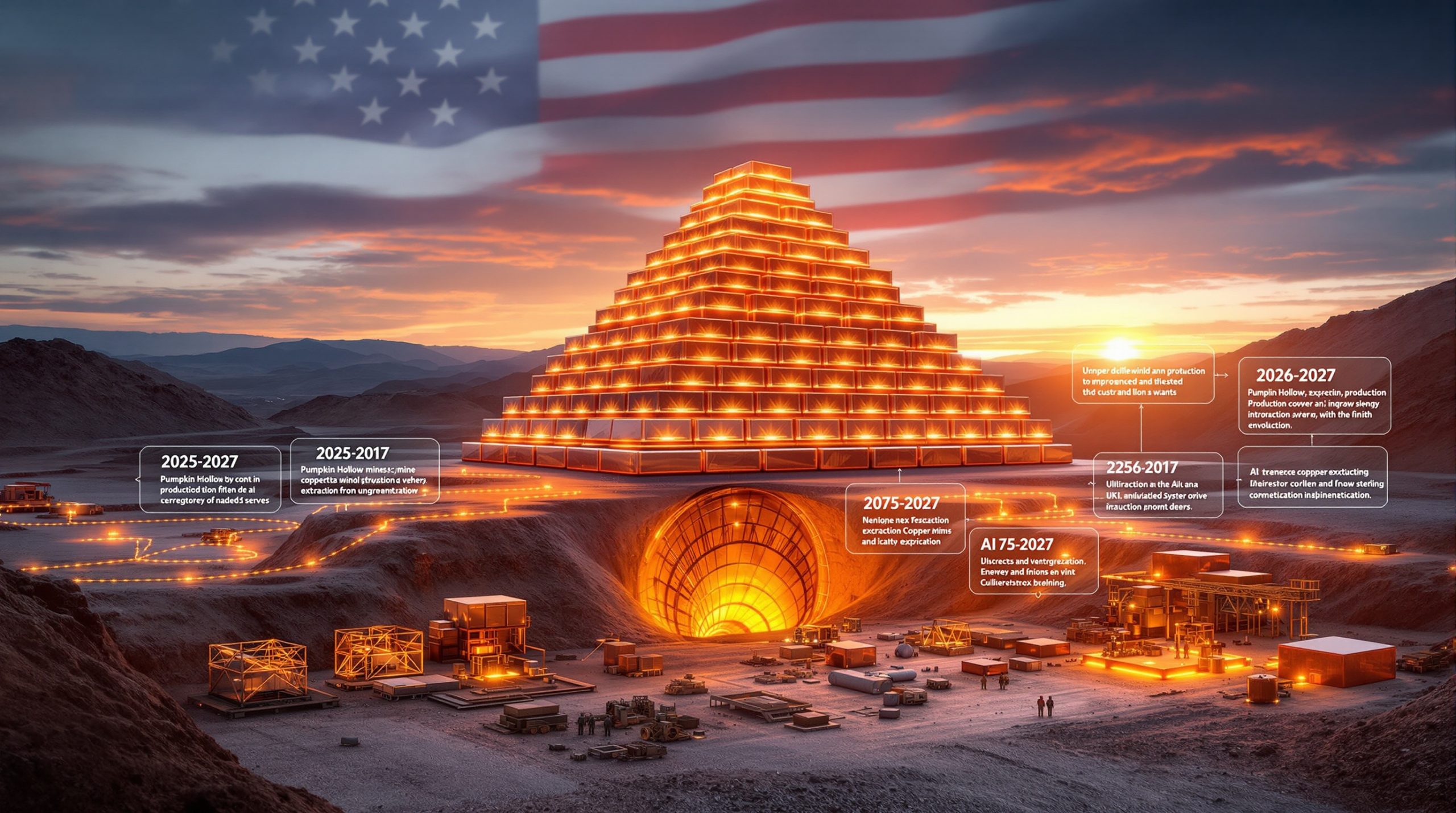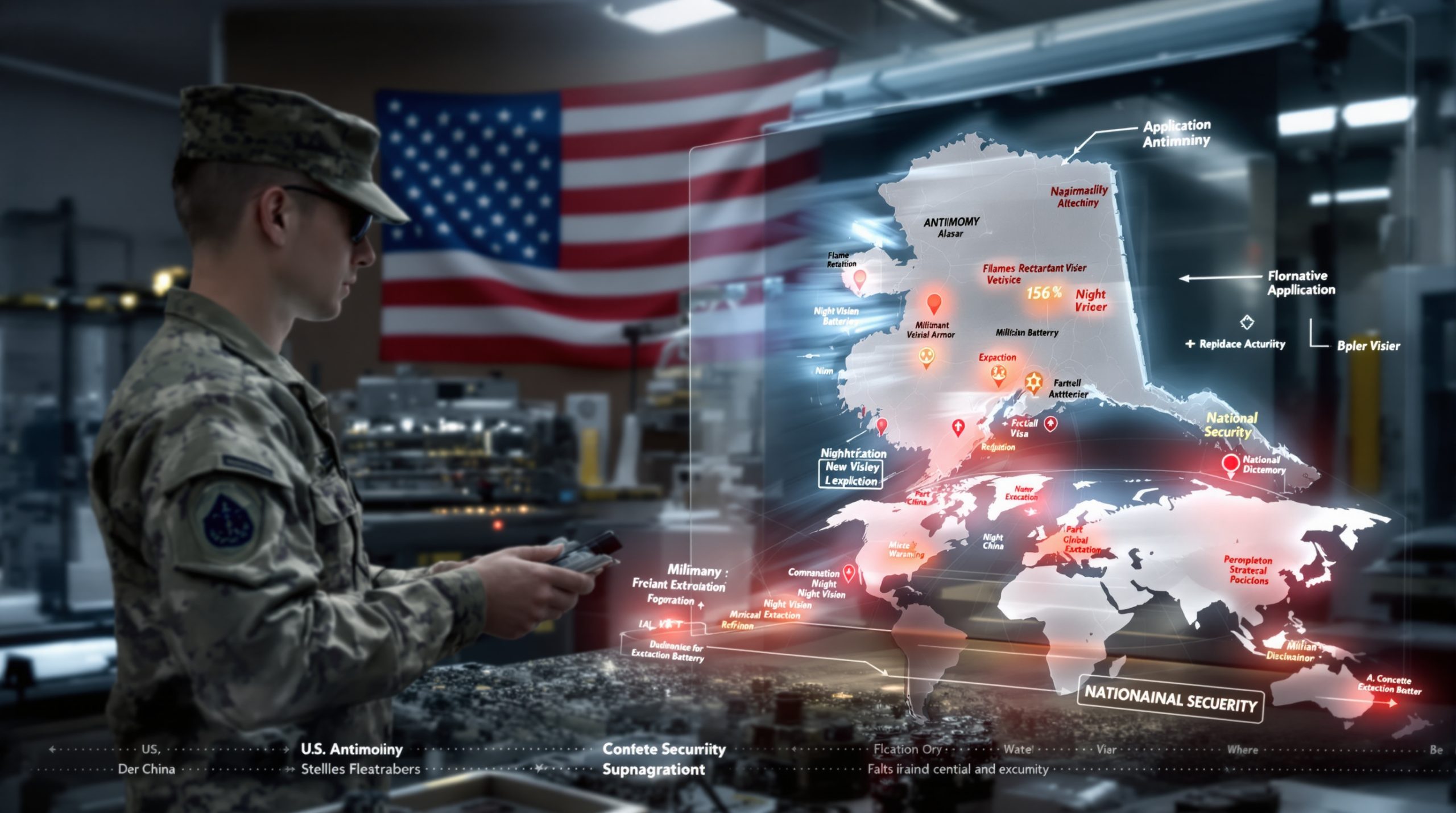Inside Apple's $500 Million Rare Earth Recycling Deal with MP Materials
Apple's landmark $500 million investment in MP Materials represents a transformative shift in how technology companies approach critical mineral supply chains. This strategic partnership, focused on rare earth recycling at MP Materials' Texas facility, establishes a domestic source for crucial neodymium and praseodymium (NdPr) magnets used in hundreds of millions of iPhones and other Apple devices.
The deal follows MP Materials' earlier $400 million equity investment from the U.S. Department of Defense, which made the federal government MP's largest shareholder. After the Apple partnership announcement, MP Materials' stock surged over 20%, signaling strong market confidence in this private-sector endorsement of domestic rare earth processing capabilities.
The $500 Million Landmark Partnership Explained
The collaboration centers on creating a circular supply chain for rare earth elements, with production scheduled to commence in 2027. This represents Apple's largest investment in sustainable material sourcing to date and establishes a new paradigm for technology companies taking direct control of their critical material inputs.
"This partnership creates a resilient, sustainable supply of high-performance magnets made in America," said Lisa Jackson, Apple's Vice President of Environment, Policy and Social Initiatives. "By investing in domestic recycling capabilities, we're reducing our environmental footprint while strengthening U.S. advanced manufacturing."
The Texas facility will focus specifically on recycling neodymium and praseodymium—two rare earth elements essential for creating the powerful permanent magnets found in everything from smartphone speakers to electric vehicle motors. By establishing a closed-loop system, Apple aims to decrease its dependence on newly-mined materials while securing a reliable domestic supply chain.
MP Materials brings crucial expertise as the only integrated rare earth mining and processing company in North America. The company operates the Mountain Pass mine in California, which contains one of the world's richest rare earth deposits, and will leverage this experience to develop cutting-edge battery recycling breakthrough.
Strategic Timing and Market Context
The Apple-MP Materials agreement comes at a pivotal moment in global rare earth politics. With China controlling approximately 85% of global rare earth processing capacity, Western nations have become increasingly concerned about supply chain vulnerabilities affecting both consumer technology and defense applications.
The timing is particularly significant considering MP Materials' recent partnership with the Department of Defense, which invested $400 million for a minority stake in the company. This public-private collaborative approach demonstrates a new model for addressing critical minerals energy security.
"What we're seeing is unprecedented cooperation between government, private industry, and technology companies to rebuild domestic capabilities in strategic materials," explains Dr. Jane Thompson, Director of Critical Materials Research at the Colorado School of Mines. "The Apple deal validates that this isn't just about national security—there's a compelling business case for reshoring these capabilities."
The market's enthusiastic response—with MP Materials' stock jumping more than 20% following the announcement—suggests investors recognize the long-term strategic value of securing domestic rare earth processing capabilities.
Why Are Rare Earth Elements Critical to Technology Supply Chains?
The Strategic Value of Rare Earth Elements
Despite their name, rare earth elements are relatively abundant in the Earth's crust. What makes them "rare" is the difficulty and environmental impact of extracting and processing them in economically viable ways.
Neodymium and praseodymium (NdPr) are particularly valuable because they enable the creation of the world's strongest permanent magnets. These NdFeB (neodymium-iron-boron) magnets deliver unprecedented performance-to-size ratios, making them indispensable for miniaturized, high-performance electronics.
Key applications include:
- Consumer technology: Speakers, microphones, and haptic feedback motors in smartphones and tablets
- Electric vehicles: Traction motors that require up to 2kg of rare earth elements per vehicle
- Renewable energy: Wind turbine generators using up to 600kg of rare earth magnets per megawatt
- Defense systems: Guidance systems, radar, and other advanced military technologies
The International Energy Agency projects rare earth demand will grow by 400-600% over the next two decades, driven primarily by electric vehicle adoption and renewable energy expansion. This surge in demand collides with an already concentrated supply chain.
The Recycling Imperative
Traditional rare earth mining and processing presents significant environmental challenges. Extracting one ton of rare earth oxides typically generates 2,000 tons of toxic waste and consumes enormous amounts of water and energy. Additionally, rare earth ore often contains radioactive elements like thorium, creating complex waste management issues.
Recycling offers a compelling alternative:
- Reduced environmental impact: Recycling rare earths generates approximately 90% fewer greenhouse gas emissions compared to primary extraction
- Supply security: Creating domestic recycling capabilities reduces dependence on geopolitically sensitive regions
- Economic efficiency: As recycling technologies mature and achieve scale, costs are projected to become competitive with primary extraction
- Resource conservation: Extending the useful life of these materials aligns with circular economy principles
The Apple-MP Materials partnership will utilize advanced hydrometallurgical processes to recover rare earth elements from end-of-life devices and manufacturing scrap. These processes use selective chemical leaching and solvent extraction to isolate specific rare earth elements with up to 95% efficiency.
"Urban mining—extracting value from what we previously considered waste—represents one of our most powerful tools for creating sustainable recycling process," notes Dr. Maria Rodriguez, author of Circular Supply Chains in Electronics Manufacturing. "The concentration of rare earths in discarded electronics can be 100 times higher than in natural ore deposits."
How Does This Deal Impact the Global Rare Earth Market?
Reshaping Supply Chain Dynamics
The Apple-MP Materials partnership signals a fundamental shift in rare earth supply chain strategies. For decades, Western companies accepted near-complete dependence on Chinese suppliers for processed rare earth materials. This deal demonstrates a new willingness to invest directly in reshoring critical capabilities.
The implications extend far beyond a single supply agreement:
- Market validation: Demonstrates commercial viability of large-scale rare earth recycling
- Competitive pressure: Creates alternatives to traditional Chinese suppliers
- Risk mitigation: Reduces vulnerability to export restrictions or trade disputes
- Technological leadership: Accelerates development of advanced recycling methods
- Standard-setting: Establishes benchmarks for sustainable sourcing in consumer electronics
The deal also comes amid broader policy shifts, including the US minerals production order and European Critical Raw Materials Act, both of which provide incentives for domestic processing of strategic minerals.
"This represents a watershed moment in critical mineral supply chains," explains Dr. Michael Chen, former advisor to the U.S. Department of Energy. "When a company of Apple's size and influence makes this scale of commitment, it creates powerful incentives for others to follow suit."
Investment Implications for the Sector
The Apple-MP Materials partnership validates business models focused on rare earth recycling and processing. With major technology companies willing to make large capital investments in sustainable supply chains, other rare earth developers may find similar partnership opportunities.
Key investment trends emerging from this deal include:
- Premium valuations for advanced projects: Companies with permitted, technically viable rare earth projects in Western jurisdictions likely to see valuation uplifts
- Increased M&A activity: Major technology and automotive companies may pursue vertical integration through acquisitions
- Capital flow to processing technologies: Companies developing innovative separation and purification methods attracting investment
- ESG premium: Projects with demonstrable environmental and social benefits commanding higher valuations
- Government co-investment: Increased probability of public-private partnerships for strategic materials
"What we're witnessing is a fundamental repricing of supply chain security and sustainability," notes financial analyst Sarah Johnson of Morgan Stanley. "Companies that can deliver both are commanding significant premiums."
What Opportunities Exist for Australian Rare Earth Companies?
Key Australian Players Positioned to Benefit
Australia hosts some of the world's most significant rare earth resources outside China and has positioned itself as a stable, reliable supplier to Western markets. Several ASX-listed companies are particularly well-positioned to benefit from the trend toward secure supply chains:
| Company | Project | Key Advantages |
|---|---|---|
| American Rare Earths (ASX: ARR) | Halleck Creek, Wyoming | Large U.S.-based deposit with direct exposure to domestic supply chain initiatives |
| Arafura Rare Earths (ASX: ARU) | Nolans Project, NT | Advanced NdPr-focused project with existing Hyundai offtake agreement |
| Iluka Resources (ASX: ILU) | Eneabba Refinery, WA | Federal government-backed processing facility for monazite concentrate |
| Hastings Technology Metals (ASX: HAS) | Yangibana Project, WA | High-grade deposit with advanced permitting and financing |
| Lynas Rare Earths (ASX: LYC) | Mt Weld, WA | Only significant producer outside China with U.S. processing facility under development |
American Rare Earths offers particular interest with its Wyoming assets providing direct exposure to the developing U.S. rare earth ecosystem. The company's Halleck Creek project contains one of North America's largest rare earth deposits, with grades comparable to or exceeding international benchmarks.
Arafura's Nolans project, meanwhile, focuses specifically on NdPr production—the same materials targeted by the Apple-MP Materials partnership. With an existing partnership with Hyundai and advanced development status, Arafura represents one of Australia's most promising near-term rare earth producers.
Potential Partnership and Investment Pathways
The Apple-MP Materials deal establishes a template that could be replicated by other technology companies seeking to secure their own rare earth supply chains. Australian green metals leadership may benefit through several pathways:
- Direct technology company investments: Following Apple's example, other manufacturers may seek equity stakes in rare earth projects
- Offtake agreements with recycling components: Long-term supply agreements that include commitments to develop recycling capabilities
- Processing partnerships: Joint ventures focused on downstream separation and magnet manufacturing
- Government co-investment: Enhanced support through Australia's Critical Minerals Strategy
- ESG premium pricing: Higher valuations for projects with strong environmental and social credentials
"Australian rare earth companies offer a compelling combination of resource quality, jurisdictional stability, and ESG compliance," explains mining analyst James Wilson of Argonaut Securities. "The Apple and MP Materials rare earth recycling deal validates the strategic premium these attributes command in today's market."
What Makes Recycling Increasingly Important in Rare Earth Supply Chains?
Technological Advancements in Rare Earth Recycling
Recent technological breakthroughs have transformed rare earth recycling from a theoretical possibility to a commercial reality. These advancements address long-standing challenges in separation efficiency, cost-effectiveness, and scalability:
- Selective hydrometallurgical processes: Advanced solvent extraction techniques that can separate individual rare earth elements with 98%+ purity
- Direct extraction from magnets: Methods to recover rare earth elements directly from end-of-life magnets without complete dissolution
- AI-powered sorting systems: Machine learning algorithms that can identify and separate rare earth-containing components from mixed electronic waste
- Continuous flow systems: Scaled processing techniques that reduce reagent use and increase throughput
- Membrane technologies: Selective filtration methods that minimize chemical inputs and waste generation
The Apple-MP Materials partnership will likely utilize a combination of these approaches, tailored to the specific rare earth content of Apple's product ecosystem. By focusing initially on manufacturing scrap—which has known composition and higher purity than post-consumer waste—the partnership can optimize process efficiency.
"The economics of rare earth recycling improve dramatically at scale," notes Dr. Thomas Wright, materials scientist at Carnegie Mellon University. "What we're seeing with partnerships like Apple and MP Materials is the creation of sufficient volume to drive process optimization and cost reduction."
Economic and Strategic Benefits
Beyond environmental advantages, rare earth recycling offers compelling economic and strategic benefits:
- Supply predictability: Recycled materials provide a stable supply source independent of mining disruptions or geopolitical tensions
- Price stability: Diversified supply sources reduce market volatility and price spikes
- Domestic job creation: Recycling facilities create high-skilled manufacturing employment
- Reduced capital intensity: Recycling operations typically require lower upfront investment than new mines
- Faster time-to-market: Recycling facilities can be developed and scaled more quickly than new mining operations
A recent analysis by McKinsey & Company suggests that by 2030, recycled rare earths could account for up to 25% of global supply, with cost parity to primary extraction achieved in many applications.
"When we factor in the true costs of rare earth mining—including environmental remediation and supply chain risks—recycling becomes not just environmentally responsible but economically advantageous," explains Sophia Garcia, sustainability director at Global Electronics Council.
What Are the Broader Implications for Critical Minerals Strategy?
Evolving Government Policies
The Apple-MP Materials partnership exists within a rapidly evolving policy landscape. Governments worldwide are implementing strategies to reduce dependence on concentrated supply chains for critical minerals:
- U.S. Defense Production Act: Authorizes direct investment in critical mineral projects
- EU Critical Raw Materials Act: Sets targets for domestic sourcing and recycling of strategic materials
- Japan's Economic Security Promotion Act: Provides subsidies for critical material stockpiling and processing
- Australia's Critical Minerals Strategy: Offers financial support for downstream processing capabilities
- QUAD Critical Minerals Partnership: Coordinates efforts among U.S., Japan, India, and Australia
These policies share common objectives: reducing dependency on single-source suppliers, developing domestic processing capabilities, and creating more resilient supply chains.
The Apple-MP Materials deal demonstrates how public and private capital can work in complementary fashion—with the Department of Defense's initial investment creating the foundation for Apple's commercial partnership.
Future Market Developments to Watch
Several key trends will shape the critical minerals landscape in coming years:
- Vertical integration acceleration: More technology companies following Apple's example by directly investing in material supply chains
- Price premium for traceable materials: Growing willingness to pay more for materials with documented sustainable and ethical sourcing
- Recycling technology commercialization: Rapid deployment of advanced separation and recovery methods
- Alternative material development: Research into rare earth substitutes gaining momentum, particularly for less critical applications
- New business models: Emergence of "materials-as-a-service" approaches where suppliers maintain ownership and responsibility for materials throughout lifecycle
"The era of treating critical materials as undifferentiated commodities is ending," observes Dr. Rebecca Chen, supply chain researcher at Stanford University. "What we're seeing instead is the development of traceable, sustainable material pathways with value assigned to security and environmental performance, not just price."
FAQ: Rare Earth Recycling and Supply Chain Security
How does rare earth recycling compare to traditional mining?
Rare earth recycling offers significant environmental advantages over primary extraction:
- Greenhouse gas emissions: Recycling produces 85-95% fewer emissions than mining and processing
- Water usage: Reduces water consumption by approximately 80% compared to conventional mining
- Land disturbance: Eliminates need for new extraction sites and associated ecosystem disruption
- Radioactive waste: Avoids the thorium and uranium management challenges associated with some rare earth deposits
- Energy efficiency: Requires 60-70% less energy than processing primary ore concentrates
While currently more expensive at small scales, recycling becomes increasingly cost-competitive as technology advances and operations achieve greater scale. The Apple and MP Materials rare earth recycling deal represents a significant step toward commercial viability through guaranteed volume and long-term capital commitment.
Why are Western countries investing heavily in rare earth supply chains?
Several factors drive Western interest in domestic rare earth capabilities:
- National security concerns: Critical dependence on foreign suppliers for defense technologies
- Historical supply disruptions: China's 2010 export restrictions demonstrated vulnerability
- Growing demand projections: Clean energy transition expected to increase rare earth demand by 300-600% by 2040
- Strategic industrial policy: Desire to maintain manufacturing capabilities in advanced technologies
- Technology competition: Rare earth expertise seen as essential for leadership in emerging fields
The Department of Defense's $400 million investment in MP Materials—making the federal government its largest shareholder—exemplifies this strategic approach. The subsequent Apple partnership demonstrates how public investment can catalyze private sector engagement.
What challenges remain for rare earth recycling?
Despite promising advances, several significant challenges must be addressed:
- Collection infrastructure: Difficulty in efficiently gathering end-of-life products containing rare earths
- Complex separation chemistry: Rare earth elements have similar chemical properties, making separation energy-intensive
- Heterogeneous feedstocks: Variable composition of consumer electronics complicating process optimization
- Design for recyclability: Need for products designed from the outset with material recovery in mind
- Scale economics: Requirement for sufficient volume to justify specialized processing facilities
The Apple-MP Materials partnership addresses several of these challenges by focusing initially on manufacturing scrap and creating guaranteed volume through a long-term supply agreement.
"The biggest barrier to rare earth recycling has always been economic viability at scale," explains Dr. Jennifer Moore, materials scientist at
Want to Capitalise on the Next Major Mineral Discovery?
Discover significant ASX mineral discoveries the moment they happen with Discovery Alert's proprietary Discovery IQ model, turning complex exploration data into actionable investment insights. Explore our discoveries page to see how major mineral finds have historically delivered exceptional returns and start your 30-day free trial today.




